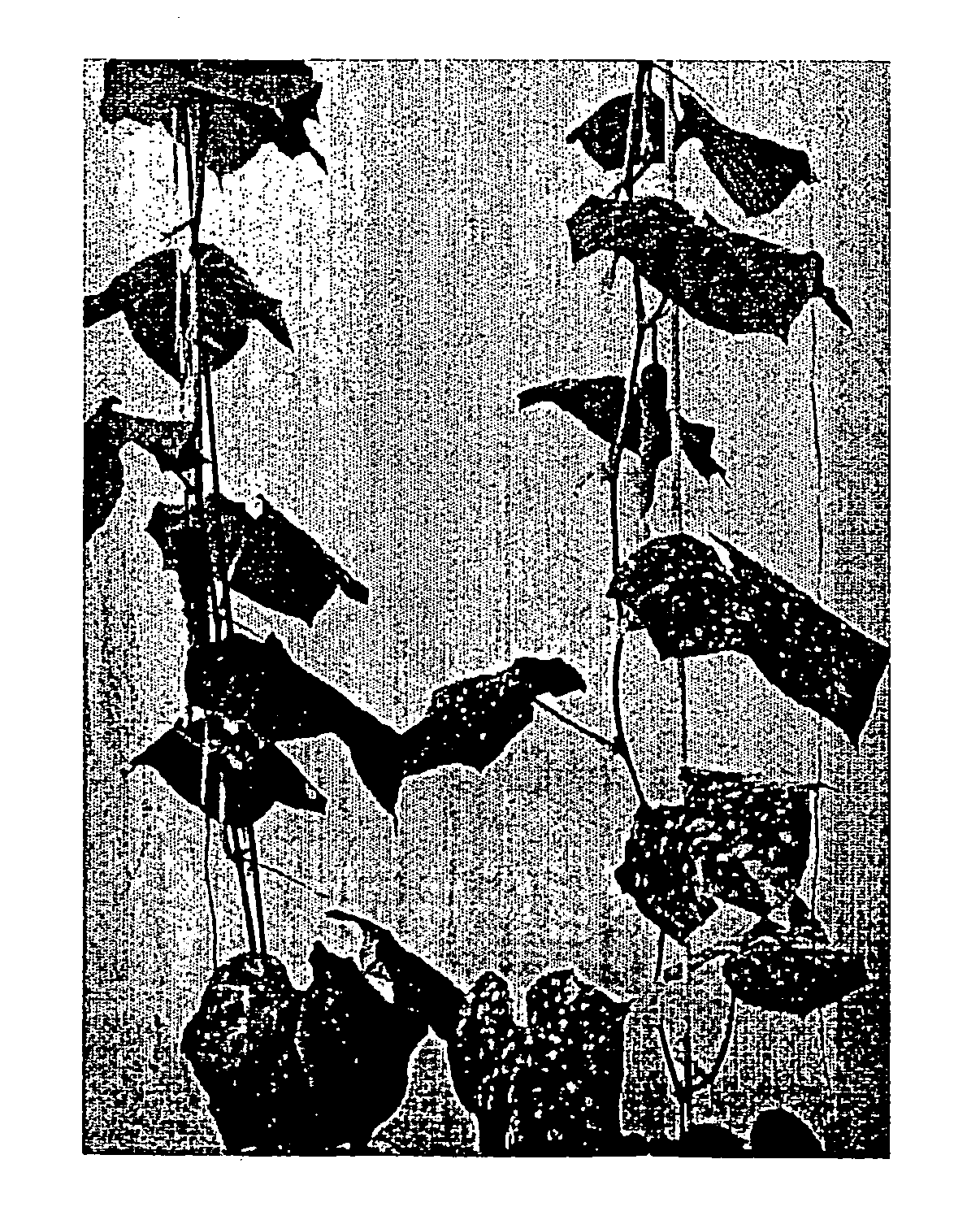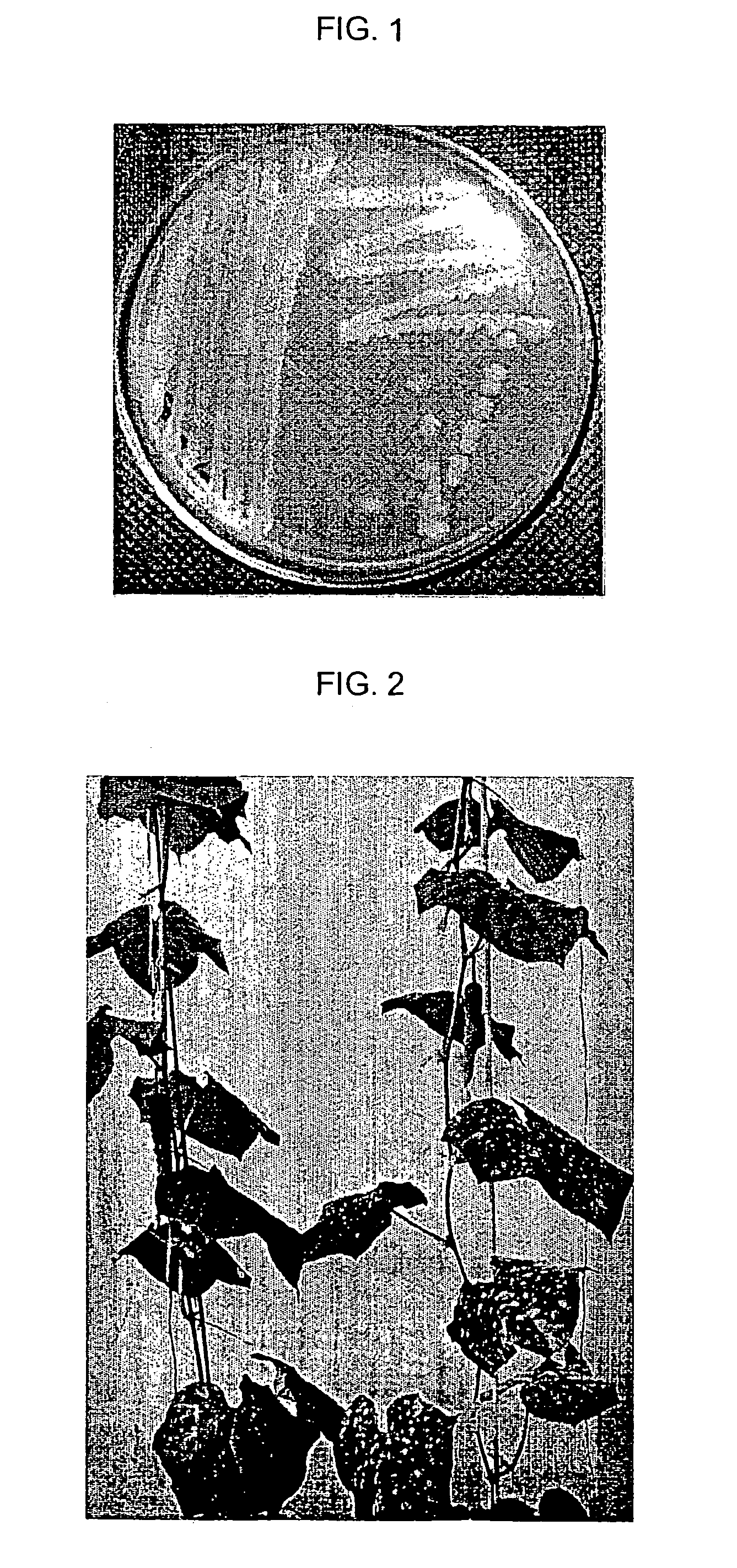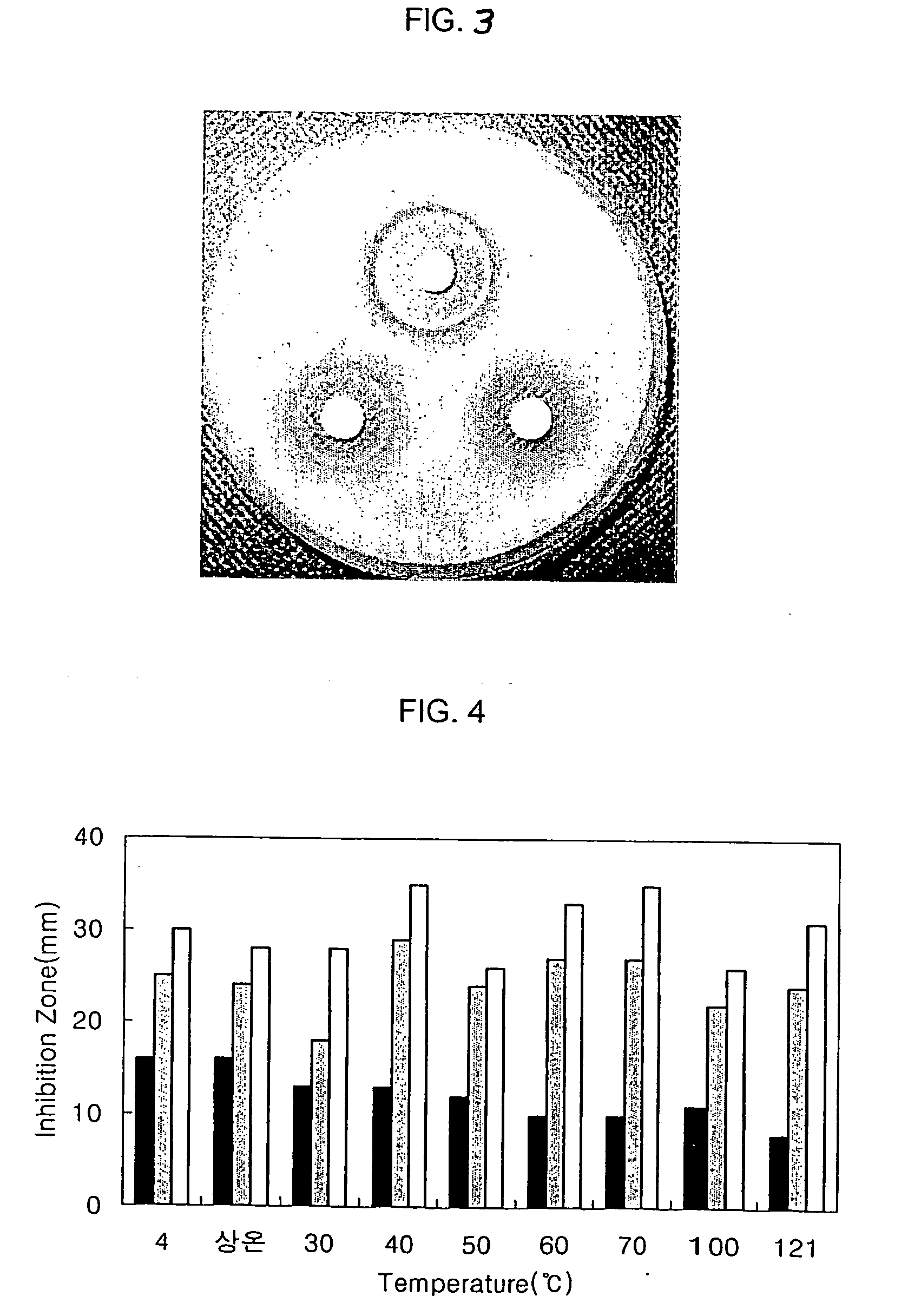Bacillus subtilis strain having antagonistic activity for controlling plant diseases
a bacillus subtilis and plant disease technology, applied in the field of new bacillus subtilis strains having antagonistic activity against plant diseases, can solve the problems of non-selective toxicity, accumulation of toxic compounds, outbreak of pathogens,
- Summary
- Abstract
- Description
- Claims
- Application Information
AI Technical Summary
Benefits of technology
Problems solved by technology
Method used
Image
Examples
example 1
Isolation of Bacillus subtilis EB120
[0029]5 g of fresh red pepper leaves were soaked in 2% NaOCl supplemented with 0.1% Tween 20 for 10 sec to sterilize their surfaces. The leaves thus sterilized were mixed with 45 ml of sterile distilled water in a mortar and the mixture was ground with a pestle, 1 ml of aliquot was taken from the ground mixture and diluted with sterile distilled water at a ratio of 1:10, 1:100 and 1:1000, respectively. 200 μl of each diluent was spread onto a tryptic soy agar medium supplemented with 40 μg / ml of cycloheximide and incubated at 30° C. until a bacterial colony was formed. The colony was taken from the medium, inoculated into a fresh nutrient agar medium and subjected to three to four times of subculture, to isolate a pure culture of a bacterial strain.
example 2
Characterization of Bacillus subtilis EB120
[0030]The bacterial strain isolated in Example 1 was identified based on characterization of morphological and biochemical features and 16S rDNA nucleotide sequencing.
(1) Morphological and Biochemical Characteristics
[0031]The isolated strain grew with thinly spreading onto a tryptic soy agar medium, and its single colony formed a small snowflower shape (FIG. 1). It showed positive reactions in Gram staining and KOH tests, which suggest it belongs to Bacillus sp.; exhibited positive reactions in catalase and oxidase tests; formed thermostable endospores; and was capable of hydrolyzing starch and casein. Further, its carbon utilization activity was assessed using a GN2 microplate (Biolog, Inc.) and the results are shown in Table 1. Here, Bacillus subtilis subsp. subtilis ATCC6051 strain (Korean Collection for Type Cultures, Korea Research Institute of Bioscience and Biotechnology) was employed as a control strain.
TABLE 1SugarEB120 strainATCC ...
example 3
Test for Pesticidal Activity of Bacillus subtilis EB120 Against Plant Diseases
[0035]In order to examine in vivo antifungal activity of Bacillus subtilis EB120 (hereinafter, referred to as “EB120”) against tomato gray mold, tomato late blight, cucumber anthracnose and then barley powdery mildew, target plants were treated with EB120 and plant pathogens were inoculated thereto 24 hrs later.
[0036]Specifically, EB120 was inoculated into 200 ml of a sterilized tryptic soy broth (Becton and Dickinson) and cultured at 30° C. for 3 days with shaking at 150 rpm. After the culture solution was diluted with distilled water at a ratio of 1:3 and 1:9, 30 ml each of the culture solution and diluents was mixed with 100 μg / ml of Xanthan gum. Tomatoes, barleys and cucumbers were cultivated in plastic ports filled with gardening bedsoil to about 70% of volume under a greenhouse condition (25±5° C.) for 1 to 3 weeks until they reached to the 2nd leaf stage of tomatoes, the 1st leaf stage of barleys an...
PUM
| Property | Measurement | Unit |
|---|---|---|
| Fraction | aaaaa | aaaaa |
| Fraction | aaaaa | aaaaa |
| Fraction | aaaaa | aaaaa |
Abstract
Description
Claims
Application Information
 Login to View More
Login to View More - R&D
- Intellectual Property
- Life Sciences
- Materials
- Tech Scout
- Unparalleled Data Quality
- Higher Quality Content
- 60% Fewer Hallucinations
Browse by: Latest US Patents, China's latest patents, Technical Efficacy Thesaurus, Application Domain, Technology Topic, Popular Technical Reports.
© 2025 PatSnap. All rights reserved.Legal|Privacy policy|Modern Slavery Act Transparency Statement|Sitemap|About US| Contact US: help@patsnap.com



